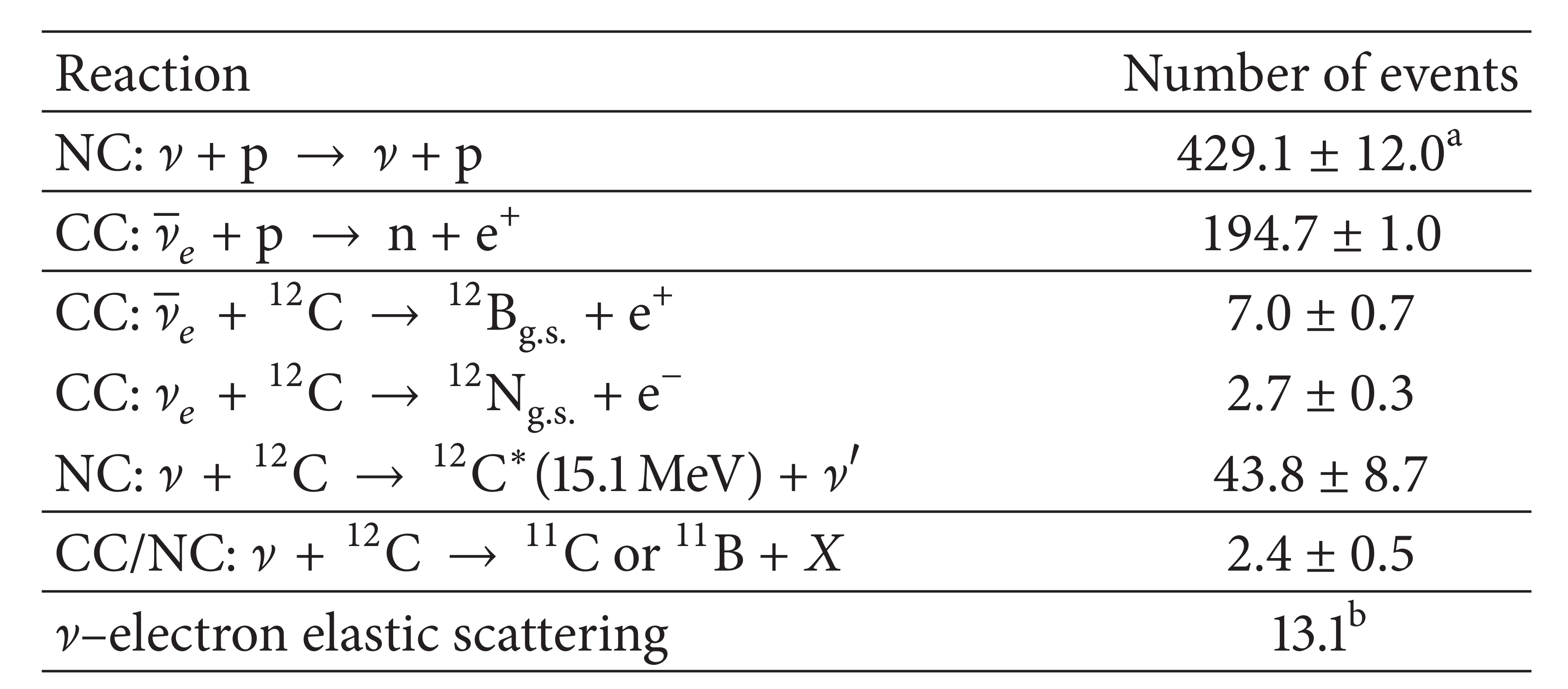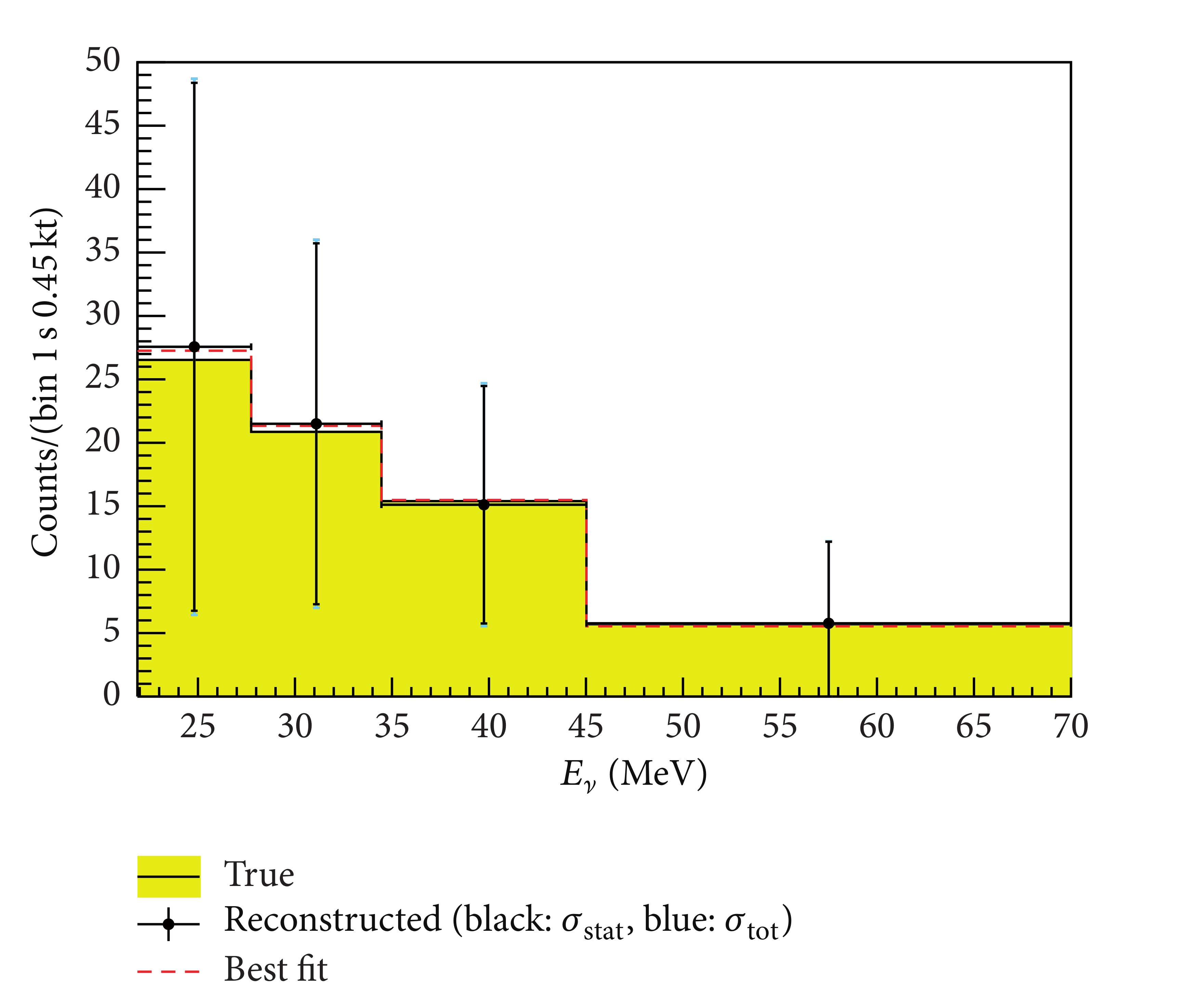Science Programme
The SNO+ Experiment is used to investigate a large suite of physics phenomena.
Find out more about our current active research interests here.
Supernova Neutrinos
During a core collapse supernova, about 99% of the dying star's gravitational binding energy is released as neutrinos. These neutrinos are generated at the core of the supernova in a time span of about 10-20 seconds, and are so numerous that they influence the supernova in fundamental ways. Neutrino heating is predicted to energize the supernova shock wave and drive it outward to ultimately cause the supernova explosion. Further out, neutrino-driven wind may be responsible for the nucleosynthesis of heavier elements. Anisotropically emitted neutrinos are even predicted to generate their own gravitational waves.
Supernova neutrinos are excellent messengers of the mechanics inside a supernova, yet the only supernova neutrino burst ever observed occurred in 1987. Known as SN1987A, this supernova occurred outside the Milky Way galaxy and generated 24 inverse beta decay events in a total of 3 detectors worldwide. SN1987A confirmed basic supernova models, but more observations of supernova neutrinos will lead to improved constraints on existing models. Supernova neutrinos also offer a broad program of other astrophysical and particle physics studies, which include the neutron star mass-radius relationship, dynamics of the explosion shock wave, and self-induced neutrino flavor conversions. While we expect 1-3 galactic supernova per century, none have been observed in the Milky Way for many centuries.
If a galactic core-collapse supernova does occur, the SNO+ detector will observe several hundred neutrinos in a short burst of about 10 seconds. A summary of the expected events for various charged current (CC) and neutral current (NC) channels in SNO+ is shown here:

Neutrino-proton scattering events will occur for all neutrino types, but the recoiling proton is quenched and requires low-threshold scintillator detectors like SNO+ for detection. Using this reaction, the reconstructed energy spectrum of all neutrinos emitted in the first second of the supernova is shown here:
